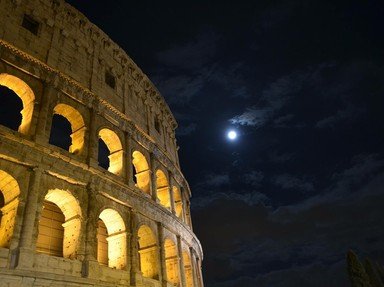Quiz Answer Key and Fun Facts
1. We all know that Rome was built on seven hills. Vatican Hill is one of the seven hills of Rome.
2. Sir William has told us pages the story of Remus and Romulus being discovered by a mother wolf on the banks of the Tiber River. There is, however, more than one river in Rome. Which of the following rivers, also called the Aniene, is considered to be a tributary of the Tiber?
3. Ancient Rome did not have its own harbor, but used a location about fifteen miles southwest of the settlement. What city served as the ancient seaport for Rome?
4. Back in ancient times, Rome was the center of a great empire. By what name, derived from the early people who lived in the area, is the region around Rome known?
5. Into which of the following seas does the Tiber River flow?
6. Two mountain ranges on the Italian peninsula helped to protect the ancient Romans from invaders. Can you name these two ranges?
7. The rich farmland around the city of Rome made agriculture the most important way of life for the ancient Romans. Which nearby volcano helped to ensure the fertility of the soil near Rome?
8. Augustus supposedly once bragged, "I found Rome a city of bricks and left it a city of marble". While that may be true, one of ancient Rome's landmarks, the Colosseum, which was built from 72-80, was not built using marble. It was built with tuff, brick, concrete, and what other stone that was quarried near Rome in Tivoli?
9. Sir William never misses out on a learning opportunity. Because castle defense is always an important topic, he made sure to take me to see the wall that was built around the city of Rome in the 4th century BC. What is the name of the wall?
10. As I said, we followed in the footsteps of Archbishop Sigeric to travel from Canterbury to Rome. What is the name of the route we followed?
Source: Author
ponycargirl
This quiz was reviewed by FunTrivia editor
agony before going online.
Any errors found in FunTrivia content are routinely corrected through our feedback system.
